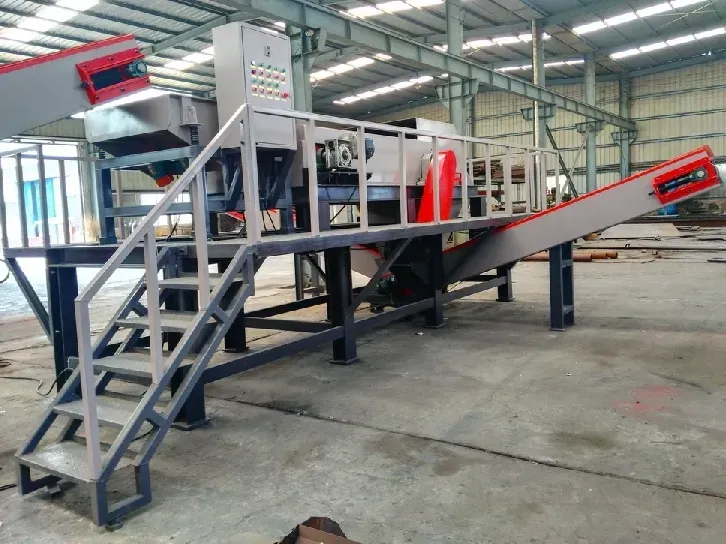
12 月 . 03, 2024 18:33 Back to list
Proper Disposal of Electronic Devices A Comprehensive Guide
In our fast-paced, technology-driven world, electronic devices have become indispensable tools in our daily lives. However, as we continuously upgrade our gadgets to keep up with the latest advancements, the question arises how do we properly dispose of old electronic devices? Improper disposal can lead to severe environmental damage and health hazards. Therefore, it is crucial to understand the correct methods for disposing of electronics responsibly.
Why Proper Disposal Matters
Electronic waste, or e-waste, is one of the fastest-growing waste streams globally. It encompasses discarded devices such as computers, smartphones, tablets, televisions, and batteries. These devices often contain hazardous materials, including lead, mercury, cadmium, and brominated flame retardants. When thrown away without proper care, these substances can seep into the soil and water systems, posing significant risks to human health and the environment.
Moreover, many electronic devices still contain valuable materials like gold, silver, and copper. By recycling e-waste, we can recover these precious metals and reduce the need for raw material extraction, which is often environmentally damaging. Thus, the proper disposal of electronic devices not only protects our environment but also promotes the sustainable management of resources.
Steps for Proper Disposal
1. Assess the Condition Before deciding how to dispose of your electronic device, evaluate its condition. If the device is still functional, consider donating or selling it. Many charities and organizations are grateful for working electronics, which can provide valuable resources to those in need.
2. Data Security Before disposing of any electronic device, ensure that all personal data is securely erased. This is particularly important for smartphones and computers that may contain sensitive personal information. Use software designed for data wiping to overwrite your data, or physically remove the hard drive before disposal if necessary.
3. Find Certified E-Waste Recyclers Once you've determined that your device is beyond repair or you’ve wiped your data, the next step is to locate an appropriate recycling center. Look for certified e-waste recyclers in your area, as they are equipped to handle electronic waste responsibly. These centers follow the best practices in recycling, ensuring that hazardous materials are managed safely.

4. Manufacturer Take-Back Programs Many electronics manufacturers have established take-back programs. These programs allow consumers to return their old devices to the manufacturer for proper disposal or recycling. Companies like Apple, Dell, and Samsung offer easy return methods and sometimes even incentives like discounts on new products. Check the manufacturer's website for specific guidelines and available options.
5. Community E-Waste Collection Events Local governments or community organizations often host e-waste collection events. These events provide a convenient way for residents to drop off their electronic devices for secure recycling. Keep an eye on community boards or local news outlets for upcoming events in your area.
6. Retail Drop-off Locations Some retail stores have e-waste collection programs or designated bins for recycling old electronics. Stores like Best Buy and Staples, for instance, accept various electronic items for recycling. It's a good idea to call ahead to verify what items are accepted.
The Importance of Education and Awareness
Raising awareness about the proper disposal of electronic devices is crucial in fostering responsible consumer behavior. Engaging in community outreach programs, social media campaigns, and educational seminars can help inform individuals about the dangers of e-waste and the available disposal options.
Furthermore, as technology continues to evolve, so too must our approaches to disposal and recycling. Advocating for better recycling technologies and policies at both the local and national levels can drive systemic change in how we manage electronic waste.
Conclusion
As responsible consumers, it is our responsibility to ensure that our electronic devices do not end up polluting our environment or harming our health. By following designated disposal methods, we can help mitigate the negative impacts of electronic waste. Prioritizing recycling and proper disposal fosters a sustainable future for our planet, preserving its resources for generations to come. Remember, when it comes to disposing of electronic devices, think before you toss; the environment will thank you!
Latest news
Unveiling the Power of Eddy Current Separator
NewsSep.25,2024
Transform Your Home Recyclin:home metal shredder
NewsSep.25,2024
The Future of Waste Management with Recycling Line Picker
NewsSep.25,2024
The Benefits of a Metal Recycling Plant
NewsSep.25,2024
Revolutionize Material Separation with Onwang Technology
NewsSep.25,2024
Innovative Waste Management: Unveiling the MSW Sorting Plant
NewsSep.25,2024